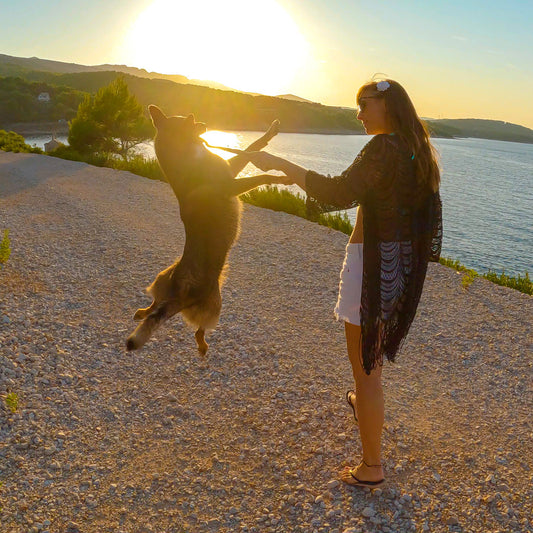As dog owners, we often find ourselves fascinated by the unique behaviors and gestures our canine companions display. Dogs have their own language, communicating through a combination of body language, vocalizations, and actions. Understanding these behaviors can deepen the bond between you and your dog while ensuring their well-being. In this blog post, we will explore some common dog behaviors and shed light on their meanings, helping you decode the messages your dog is trying to convey.
Tail Wagging
Tail wagging is a classic canine behavior, but it's important to note that it doesn't always indicate happiness. Here's what different tail positions may convey:
- High and Stiff: A high, stiff tail often signifies alertness, confidence, or even aggression. Approach with caution and assess the situation carefully.
- Low and Wagging Slowly: A low, slow wag often indicates uncertainty or submission. It could mean your dog is feeling unsure or insecure in the current situation.
- Horizontal and Wagging: A horizontal tail position with a gentle wag is generally a sign of a relaxed and content dog.
Barking
Barking is a form of communication for dogs, and its meaning can vary depending on the situation and accompanying body language:
- Alert Barking: A series of short, sharp barks usually indicates that your dog is alerting you to something they perceive as a potential threat or unusual activity.
- Playful Barking: Rapid and high-pitched barks during playtime are typically a sign of excitement and enthusiasm.
- Anxiety or Fear Barking: Prolonged, intense barking with a high-pitched tone may indicate fear, anxiety, or a desire to protect themselves or their territory. It's essential to address the underlying cause of their distress.
Body Language
A dog's body language can provide valuable insights into their emotional state:
- Relaxed Posture: Loose, relaxed muscles, and a wagging tail in a neutral position typically indicate a calm and content dog.
- Crouching or Tail Tucked: These signs suggest fear, anxiety, or submission. Your dog may be feeling threatened or uncomfortable.
- Raised Fur (Hackles): When a dog's fur stands up along the spine and neck, it can indicate heightened arousal, fear, or aggression. It's a physical response to make themselves appear larger.
Pawing
Pawing is a behavior dogs exhibit for various reasons:
- Attention-Seeking: Dogs may paw at you to get your attention or express their desire for interaction, play, or physical contact.
- Discomfort or Pain: If your dog is persistently pawing at a specific area of their body, it could be a signal of pain, discomfort, or irritation. Observe and consult with a veterinarian if needed.
Licking
Licking behaviors serve several purposes:
- Affection and Bonding: Licking is a common way for dogs to show affection and establish social bonds with their owners or other dogs.
- Cleaning and Soothing: Dogs often lick themselves to clean wounds, soothe irritations, or alleviate itching. However, excessive licking can indicate discomfort or an underlying issue that requires attention.
Remember, every dog is unique, and behaviors may vary depending on their breed, personality, and experiences. Understanding your dog's individual cues and body language is crucial for effective communication and building a strong relationship. Pay attention to the context, accompanying cues, and the overall demeanor of your dog to accurately interpret their behaviors. With patience, observation, and love, you can unlock the secrets of your dog's behavior and strengthen the bond you share




